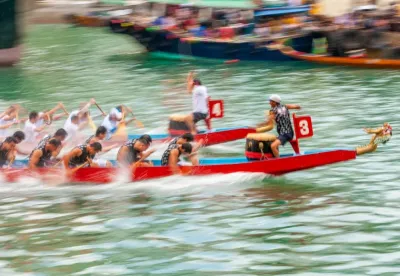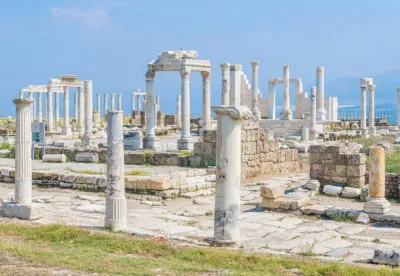
According to the World Tourism Organization, the "number of international tourist arrivals grew by 5% in the first half of 2013 compared to the same period in 2012, approaching 500 million people." In the Mediterranean area, there are many differences though. Southern Europe is starting to retrieve its economic strength despite the economic crisis in the south Mediterranean region, which is in sharp decline due to political instability.
This summer’s tourist season has ignored the recession in Greece. June began with a bang when the income from Greek tourism increased by 21% (EUR 1.59 billion) compared to June 2012, according to the Greek Central Bank. The latter estimates an increase of 10 to 13% of the number of travelers in 2013 and believes that "in the future, tourism will be very favorable" supported by "a rising middle class in emerging markets," particularly in Turkey.
Tourism in Spain is also getting better. According to the Ministry of Industry, Energy, and Tourism, the country welcomed 7.9 million foreign visitors in July, a 2.9% annual increase. Afraid of destinations considered unstable, the mass of travelers coming to devour touristic coasts has enabled the country to establish a new record for the month of July. The Spanish National Institute expects more than 58 million tourists in 2013, 5.3% more than in 2012.
France suffered from the comeback of these two destinations. The Union of Trades and Hospitality Industries (UTHI) noted a decline in July of 10% of the attendance in hotels and restaurants. Roland Heguy, President of UTHI, states that tourism figures are "very bad everywhere in France (...). Too many factors accumulate: the weather, the economic crisis, the purchasing power of the French, lower last minute sales, and increased competition from other European destinations, such as Spain or Greece. "
Mondoramas, a French tour operator, notes that a very high price pressure was exerted this summer. In addition, vacationers preferred short five day circuits instead of full weeks. Preferred destinations included the Riviera, "a safe bet", Nice and Monaco that "grow their glamor”, while the 'French way of life', the deep and authentic France, attracts more and more foreigners" says Yves Guivarc'h CEO of Mondoramas.
The first tourist region in France in terms of summer destination is Provence Alpes Côte d'Azur. It is doing well by achieving 110 million nights with 1.8 million tourists present on average per day in the region and a EUR 6 bn tourist spending. According to a survey from the PACA Regional Tourist Board for the period July 15/August 15, "80% of professionals show their appreciation for the heart of the season that they see as good." For accommodation this rate rises to 98% for hotels and 93% for tourist homes.
Pierre Meffre, President of CRT PACA, noted however some differences among the region’s three strengths: urban tourism (84% of positive opinions during this season), mountains (83%), and the seaside coast (77%). More than anything however, other than very good weather, two events have boosted attendance: the 100th Tour de France and Marseille Provence European Capital of Culture in 2013 (MP2013).
In Marseille, the Tourist Office and Convention Bureau recorded, in July 2013, a 23% increase in visitors compared to the same month in 2012. If Yves Guivarc'h says Marseille retains its "bad reputation", the Tourist Office responds with numbers: "more than one million cruise passengers are expected, and 434 cruise calls will be organized by 27 companies" for 2013, “another success” he says. "The image of Marseille has changed with the MP2013" adds Pierre Meffre.
According to Isabelle Bremont, Director of the Departmental Committee of Tourism of the Bouches-du-Rhone, cities participating in MP2013 hosted some 5 million tourists since the beginning of the year. The only NMCM (new Mediterranean Civilisations Museum), opened in June 2013, with an attendance of 800,000 visitors. Though only 40% of this figure includes paying visitors because this museum is also opened for free.
2013 promises to be a good year in Morocco with a 3% increase of attendance during the past five months, thanks to Italy, said the Moroccan National Tourist Office (ONMT) in Le Matin. A majority of hotels were fully booked in August and the National Federation of Tourism recognizes that the instability of neighboring countries has been beneficial for the tourism sector in the country.
In Tunisia, the 2011 revolution left its traces. According to the TAP agency, resorts in Tabarka and Ain Drahim recorded a slight increase in their activity in early August. The number of tourists increased by 4.8% in the first half of 2013, with 2.6 million visitors. But, this rate is much lower (-9.8%) than in 2010. The Tunisian Federation of hospitality expressed "dismay (...) against the increase in acts of violence and attacks on the country's image and tourism." In response, the Ministry of Tourism announced in August the launch of a plan of action for this sector, which favors a heavy marketing of Tunisian products with foreign tour operators.
Insecurity in the Mediterranean was also caused by tourism in Egypt. Italy invited tourists to leave their places of residence, while France has asked its citizens to postpone or cancel their trips to Egypt. Several tour operators have stopped offering trips in the country: for example Fram or Voyageurs du Monde. To make matters worse, Costa Cruises has canceled all stops in the country and cruises in the Red Sea during the autumn/winter 2013-2014 season.










I agree that the travel was up this year in Morocco. There are more tourists coming to explore the country but one of the biggest reasons are the trouble in the surrounding countries. Morocco is one of the stable countries of the Arab world.
It is almost a surprise all the different nationalities that travel to Morocco. It is not only the European and American, Canadian or Australians. We had visitors to Morocco from Malaysia, Thailand, Mexico, Hong Kong, Sri Lanka ... so many countries.